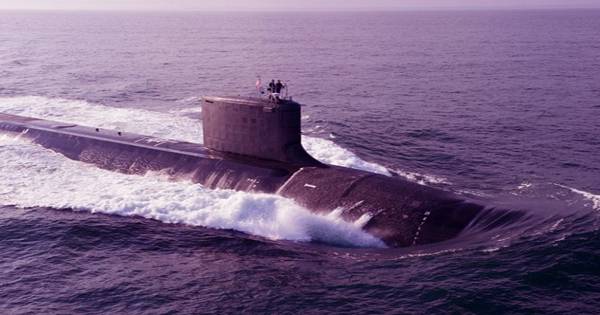In 1981, a Soviet submarine sank off the coast just 10 kilometers (6.2 miles) south of a Swedish naval base. The Soviets claimed that they were forced into Swedish territory by a severe crisis and later navigation errors, and Sweden saw this as evidence that the then Soviet Union was infiltrating Swedish waters. To no avail, when Swedish officials secretly measured for radioactive material using the gamma-ray spectrum, they found that they were 90 percent sure they had uranium-23 used in the possession of nuclear weapons inside the sub, Indicates that it may be nuclear-equipped.
It is quite possible that a major diplomatic event among the nuclear superpowers in the 1980s could be triggered by fish farts. In fact, Russia and Sweden almost stumbled upon this. They just didn’t know then.
The submarine was returned to international waters, but the Swedish government was vigilant, making sure that the Russian people could still operate near their territory. These are when they start picking up signals and sounds under elusive water. In 1982, several Swedish submarines, boats, and helicopters followed this anonymous source for a whole month, just to arrive empty-handed.
Sweden was certainly worried about infiltration, and could not think why Russia would continue to do so after the end of the Cold War. This continued for a decade. Each time they pick up a sound signal they will search and find nothing but a few bubbles at the bottom of the ocean.
“We brought this very secret room under the Bergen naval base in Stockholm,” he explained in a 2012 TEDX talk. “We sat there with all these officers and they actually played these words for us. For the first time, we heard any civilian noises.
He imagined it would sound like pinning in the movies, even when a submarine was caught or heard the sound of a propeller.
In 1996, Magnus Wahlberg, a professor at the University of Southern Denmark, joined the investigation into the strange signal. “It was nothing at all,” Wahlberg said. “It sounded like someone was baking bacon. He and his colleagues set out to determine what bubbles could form on a scale that would make Sweden wonder what it was doing to a nuclear submarine.
“This is a very unique connection, found only in herring. So a herring can squeeze its swimming bladder and thus it can expel a small number of bubbles through the opening of the anus.” Wahlberg said. “It turns out that the herring has a swimming bladder and this swimming bladder is attached to the fish’s anus.”
When something close to them scares them – say, a school hungry for mackerel or a submarine to search for Russian spies – they can produce a lot of gas. In common parlance, they tear one to shreds. Herrings swim in huge schools that can reach several square kilometers and up to 20 meters (65 feet) deep. To test his theory, Wahlberg applied pressure to buy a herring from a store and made enough of it to make a sound. He took the footage to the Navy personnel and played it to them. It was a perfect match for the noise they heard.
Since it was determined which fish farts were and which were not, there are zero reports of enemy intruders into Swedish waters. The good news is that Sweden was not under threat from Russia; the bad news is that it took 10 years to deploy the army in search of fish farts.















